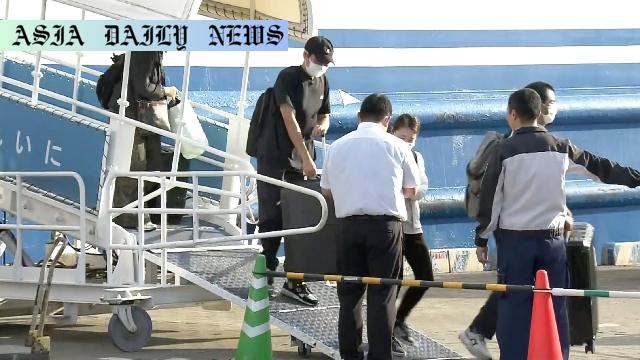Evacuation: Evacuees from quake-hit Akusekijima and Kodakarajima in Japan’s Kagoshima Prefecture arrive safely in Kagoshima City.

Evacuees Arrive in Kagoshima City Amid Rising Seismic Concerns
The recent seismic activity in the Tokara island chain has caused significant disruptions, prompting residents to seek safety elsewhere. On Sunday evening, a second group of evacuees arrived in Kagoshima City. This group consisted of 46 individuals, with 31 from Akusekijima and 15 from Kodakarajima. Their journey to safety was facilitated by a ferry operated by the Toshima village authorities, who coordinated the evacuation in response to frequent and intense tremors in the region. The evacuees are currently being accommodated in local hotels and the homes of relatives, reflecting the close-knit community response to this disaster.
Overview of Seismic Activity and Its Impact
Seismic activity in the Tokara island chain has been ongoing since June 21, with tremors growing in frequency and intensity. A particularly powerful earthquake struck Akusekijima on Thursday, registering a lower 6 on Japan’s comprehensive seismic intensity scale, which ranges from 0 to 7. This quake, combined with subsequent aftershocks, has prompted residents to evacuate out of caution. On Sunday alone, two earthquakes with an intensity of upper 5 were recorded, further emphasizing the urgency and necessity of evacuations. Officials have confirmed that, as of now, 59 evacuees have left the islands. However, challenges remain, as 23 residents still reside on Akusekijima and 41 on Kodakarajima, with village authorities closely monitoring and addressing their preferences and needs for evacuation.
Response and Measures by Local Authorities
The rapid and coordinated response by local officials highlights both the severity of the situation and the resilience of the involved communities. The village of Toshima has been proactive in ensuring that those who wish to evacuate have access to safe transportation and accommodations. Although the current evacuation is expected to last for approximately one week, officials have stated that extensions will be considered if seismic activity persists. The potential for a third group of evacuees to leave the region is being assessed as officials continue to prioritize the safety and well-being of residents.
What the Future May Hold
In the wake of disasters like these, long-term recovery and safety measures are often at the forefront of discussions. While immediate evacuations address the urgent need for physical safety, the mental and emotional toll on residents cannot be overlooked. Ensuring that adequate resources and support systems are in place for evacuees, including psychological services, is paramount. In addition, the authorities will likely evaluate building infrastructure, disaster preparedness, and early warning systems to mitigate risks in the future. The situation in the Tokara island chain serves as a reminder of the unpredictable nature of natural disasters and the importance of community resilience in facing them.
Commentary
Supporting Evacuees Amid Natural Disasters
The evacuation of residents from Akusekijima and Kodakarajima in light of intense seismic activity showcases the strength of collective action in times of crisis. Natural disasters demand swift responses, and the coordinated efforts by Toshima village officials and local authorities in Kagoshima Prefecture deserve commendation. Acting with urgency and foresight, they have ensured the safe relocation of 59 residents so far, providing much-needed relief to affected individuals and their families.
The Emotional Toll of Displacement
While the physical relocation of evacuees is a vital step, the emotional and psychological effects of such a displacement cannot be overstated. For many residents, leaving their homes amidst an uncertain environment is a harrowing experience. The sudden upheaval disrupts daily routines and causes anxiety about the future. Local municipalities should take steps to extend psychosocial support to help evacuees cope with the challenges of adjusting to new environments, even temporarily.
Building Community Resilience
This event highlights the broader need to strengthen preparedness for natural disasters. Measures such as early warning systems, resilient infrastructure, and effective community education are integral to mitigating the impact of such occurrences. Additionally, honest and empathetic communication plays a key role in managing public anxiety and encouraging cooperation. By fostering solidarity and resilience, authorities can help communities recover more effectively in the face of natural disasters.
A Call to Action
Disasters such as the earthquakes in the Tokara island chain serve to remind us of the fragility of human life and the importance of preparedness. This situation calls for both immediate and long-term responses. As a global society, we must prioritize disaster risk reduction strategies while staying committed to supporting those affected. Through shared effort, compassion, and foresight, we can create safer environments for vulnerable populations while better equipping ourselves to face the unpredictable forces of nature.


